Today we’re excited to announce the Entity API – enabling instant access to your warehouse data in your website, app, or internal tool without additional engineering work.
With a single click, you can bring infinite personalization from your Customer 360 data model to any destination or context needed, on demand, and in milliseconds. ⚡️
Instead of custom-building personalization into your app, reuse the modeled data in your source of truth and fetch any and all customer data using the Entity API.
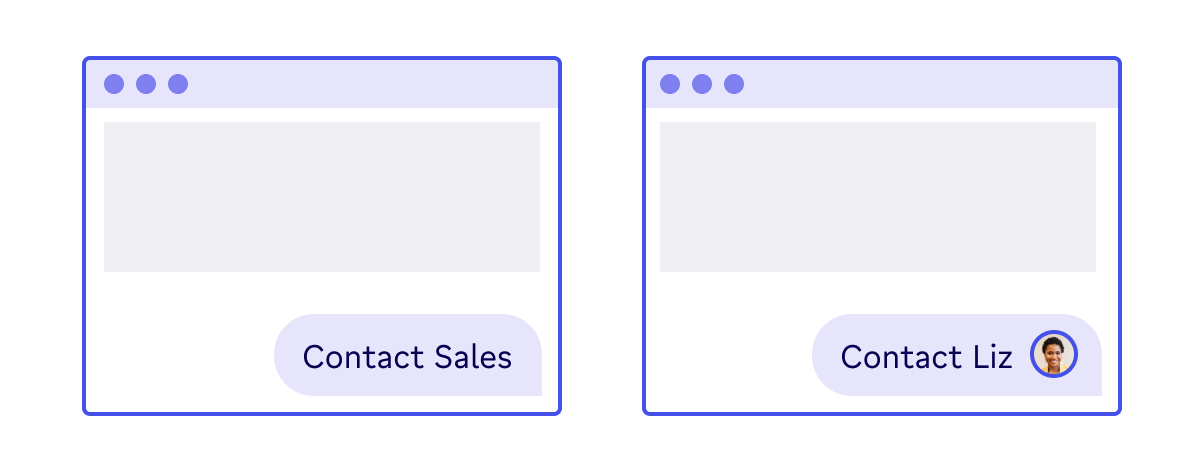
Traditionally, Reverse ETL pushes data into services that accept and store data, for example a CRM or email marketing platform.
But there are many services that need more data, and don’t have the ability to store it. Or you might not want to store data for privacy or data governance reasons.
In this case, it’s more natural to pull the data needed. The Census Entity API opens up a whole new world of personalization use cases with fast, up-to-date, pull access to data. Now, all of your data is consistent across your SaaS tools, as well as destinations powered through the API.
It’s easier than ever to build personalized customer journeys and deliver cohesive experiences every time a customer interacts with your brand.
The Problem: Pulling data for real-time personalization requires complicated API architecture
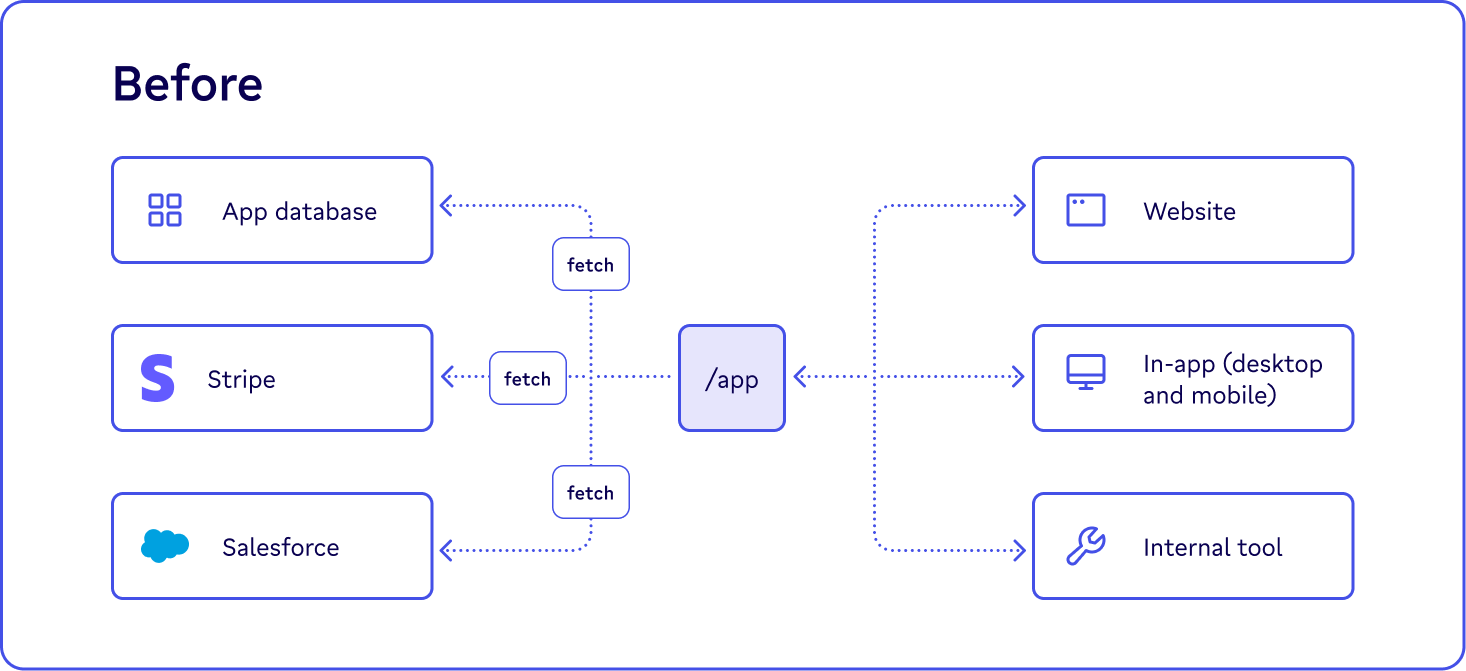
Historically, to enable real-time personalization, you had to tackle two core problems:
- Build a fully featured user profile
- Build a high performance API to serve it
Building a user profile is a hard data problem. To serve an API, it’s easy enough to start with a transactional database like Postgres or a NoSQL option, but this database will need access to a wide set of customer data points that will later need to be cleaned and resolved, which requires complex transforms not well suited for transactional DBs. Census users are deeply familiar with building these user profiles in the data warehouse with access to ELT and dbt but Analytical Data Warehouses are not optimized for this type of sub-second, individual record access).
Assuming the data is available, it also then needs to be served securely, with appropriate authentication, and fast with sub second latency to be used in realtime personalization use cases. For example, platforms like Webflow and Braze support personalizing content of a website or email based on the visitor. That personalization can access an API to look up details about a user such as what country they’re in or what products they should be recommended. Making your own first-party data available requires a lot of engineering to build that API.
Until now, engineers had to build custom APIs for personalization, in addition to:
- Managing multiple databases
- Worrying about API infrastructure (access, auth)
- Maintaining the API as the data model changes and troubleshooting it if anything goes wrong
The Solution: Personalization made easy with the Census Entity API
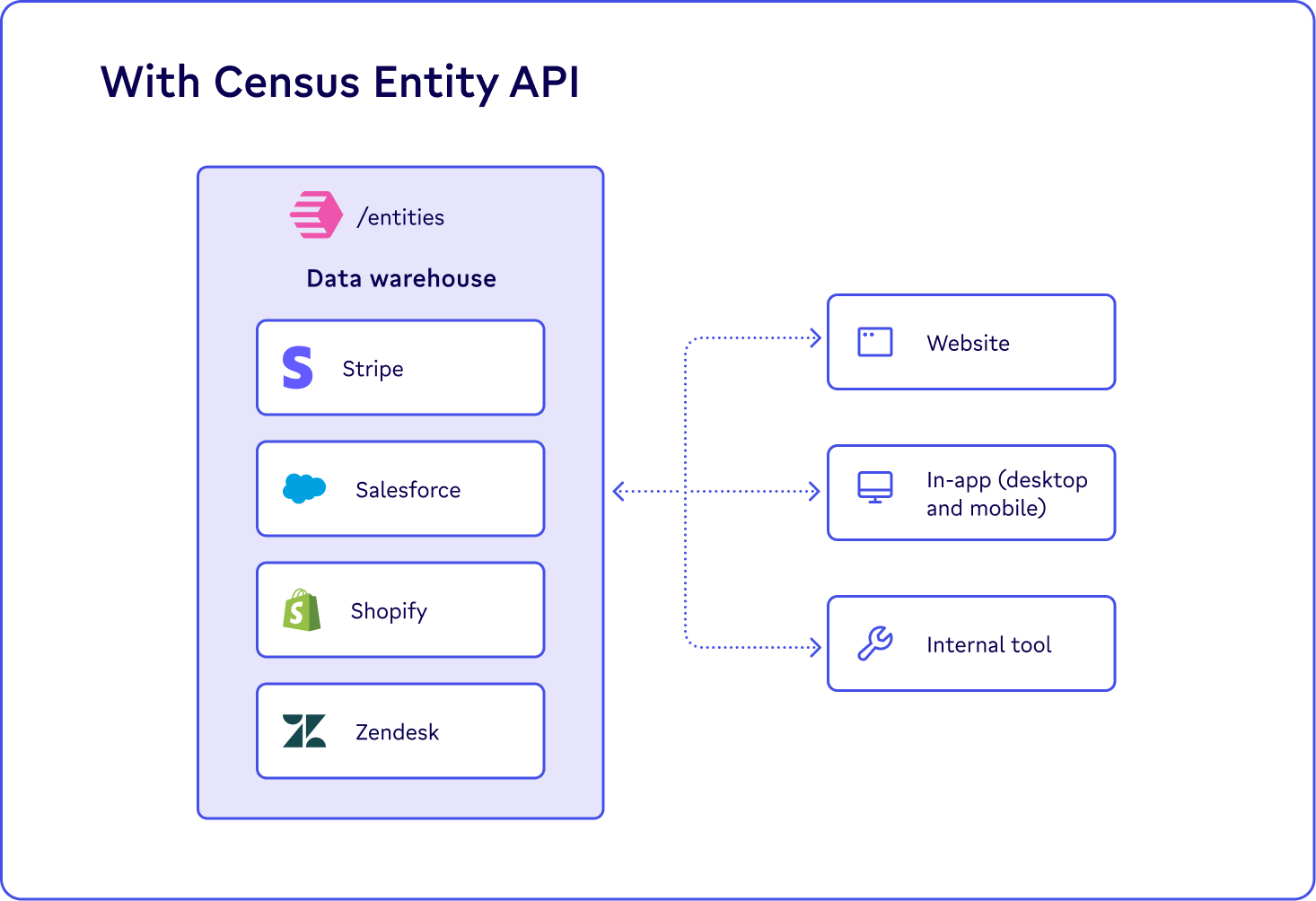
The Entity API simplifies pulling data for personalization use cases. Think of it as an API layer on top of your warehouse. Instead of communicating with 3+ API endpoints to bring real-time personalization to an app, just query the Entity API once.
At Census, our mission is to help data teams build a data platform that can power all aspects of their business. The Entity API builds on Entities, the semantic definition of the most important data of your business. You specify identifiers in Entities and that automatically indexes your data for fast access. Because Census already understands the structure of your customer data, we make it even more usable.
All of that work that data team does to clean, manage, and govern their data is the hard problem. Building and hosting the API is the easy part! Enter the Entity API which provides an a standard REST API for accessing your data, powered by dedicated infrastructure for serving your data fast and scalably.
Now with a single click, you can enable instant access to your data via authenticated REST API, with zero engineering required. ⚡️
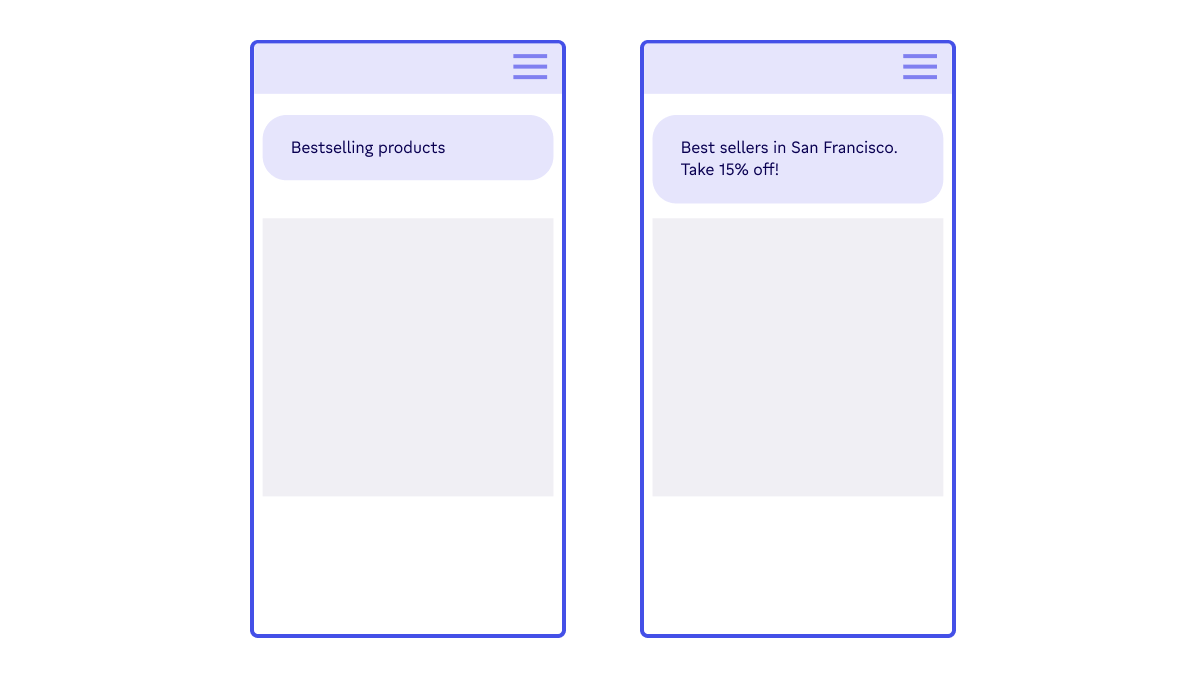
With the Entity API, you can pull Customer 360 data into any destination or context needed, on demand, and in milliseconds. This unlocks a wide set of additional uses for your data including:
- On-Demand Personalization - When a user visits your site, call the Entity API to provide additional context about the user and customize a marketing website or show personalized in-app experiences. The Entity API can power different visual experiences by customer segment, specific user profiles like country, and even individually by user (for example, displaying the name of an account rep directly in-product).
- App Platform - Build sidebars and micro apps such as browser extensions to view data inline. For example, products like Front and Stripe offer rich frameworks for building sidebar extensions. The Entity API provides a real-time way to pull customer context into extensions and other internal applications.
- Enrichment - Leverage your first-party data for enrichment alongside third-party data sources. You can even use Enrichments to combine first party and third party data together into a single API call.
Ready to get started?
A single click turns on API access for all of your entities. Now you have REST API access.
const response = await fetch(
http://app.getcensus.com/api/v1/entities/1/record?record_id=${id}, {
headers: {
Authorization: "Bearer secret-token:1234567890abcdefg"
}
})
const data = await response.json()
console.log(data) // Shows everything we know about that record
If you want to see what it looks like, you can use an API client like Postman or Insomnia to access the data.
Census Entity API.postman_collection.json
Now you can plug that into any service that can consume the API. It’s that easy!
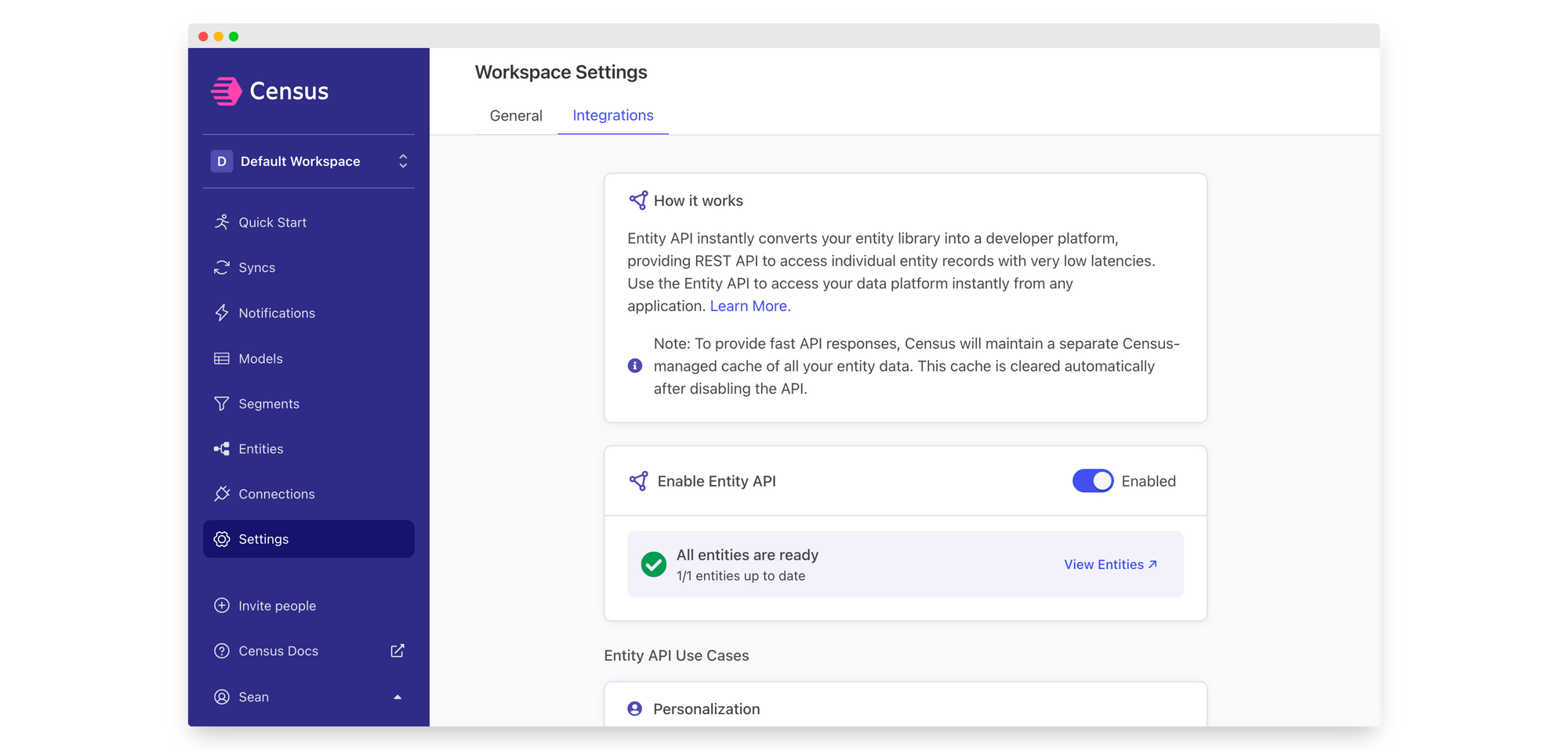
The Entity API is available for customers on Census’s Platform Plan. For more information, check out the product docs.
What’s next?
The Entity API opens up your warehouse to a world of potential use cases. We’re very excited to see all the places you’ll take your data.
There’s lots of new API functionality on the roadmap including listing/paginating full data sets, accessing single records, and more control over which subsets of data are accessible via API.
As always, we're committed to making Census as user-friendly as possible, and we're constantly looking for ways to improve our product. If you have any feedback or suggestions, we'd love to hear from you. Just reach out to support@getcensus.com, and we'll be happy to chat.
👉 Schedule onboarding or try for free today!

















